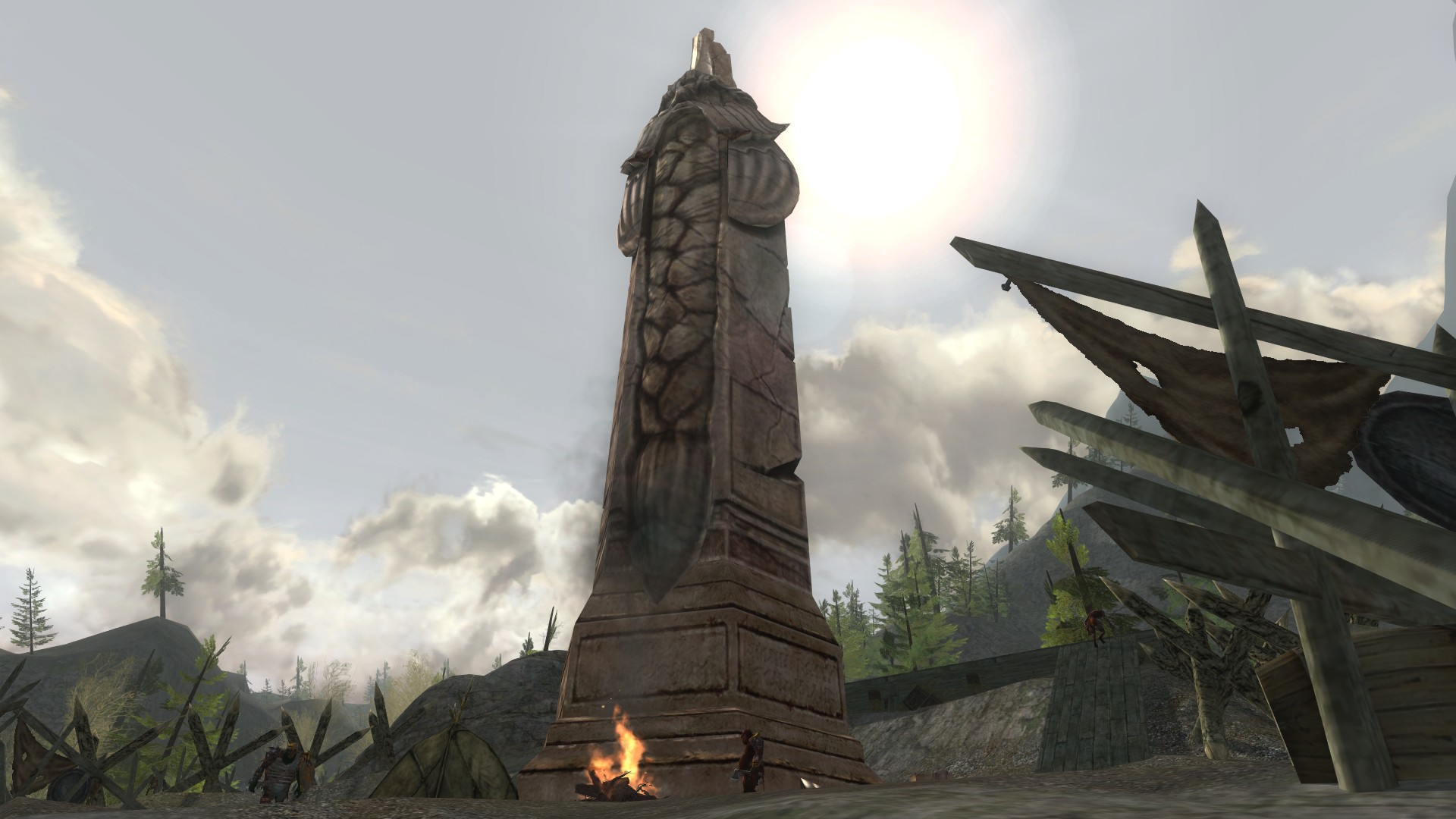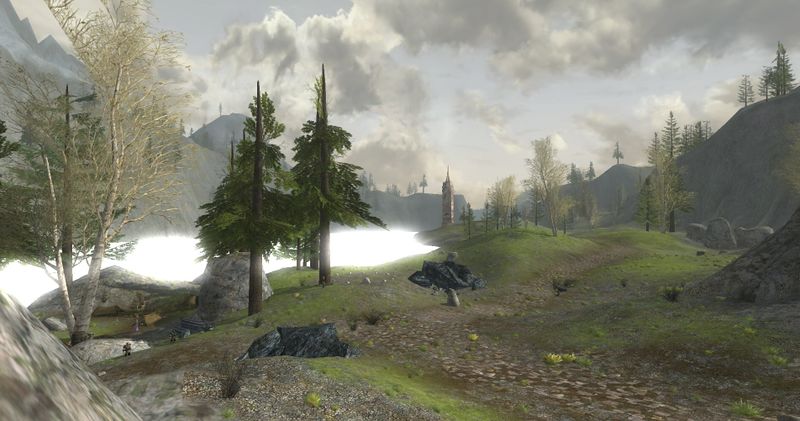Welcome back to LotRO and Lore, an article series where we take a look at a few of the stellar ways that Turbine ties Tolkien’s wonderful writings into the realm of the MMORPG. Today we look at a region that was first introduced in the days of the Mines of Moria expansion.
As much as I love Moria and it’s history, fresh air is always something I yearn for after spending a few days in the mines and pits. An unassuming vale nestled between two spurs of the mighty Misty Mountains is the first sight that players encounter upon exiting the eternal darkness of Moria, and the sun is certainly a welcome sight after levelling a character for a significant period of time entirely underground. This is an area so small in the eyes of the game that it is incorporated into the ‘Lothlorien’ region and quest pack by the developers and only offers a few quests and locations of note. But what is there to learn from this small speck of land just west of the Golden Woods?

The Dimrill Dale, known as Azanulbizar by Durin’s Folk or Nanduhirion to the elves, is a place of special signifiance to the dwarves. Here it was that Durin the Deathless, chief among the Seven Fathers, peered into the Kheled-zâram (or Mirrormere) and decided to found the colony of Khazad-dûm. In The Fellowship of the Ring, Gimli sings a song that recalls this event:
…
He [Durin] stooped and looked in Mirrormere,
And saw a crown of stars appear,
As gems upon a silver thread,
Above the shadow of his head.
…
The ‘gems’ referenced in the song are the reflections of stars. Durin observed what appeared to be a constellation of a crown above his head and took it as a sign of divine providence, thus leading him to found Moria (or so the story goes.) The song later reflects on this, in the last verse:
…
But still the sunken stars appear
In dark and windless Mirrormere;
There lies his crown in water deep,
Till Durin wakes again from sleep.
If you gaze into the Mirrormere in LotRO, even in broad daylight, you will see the reflections of stars in the water. No other lake in the game can boast this unique attribute, taken right from the pages of Tolkien’s works.

Another point of interest is Durin’s Stone. This is a place of great interest to the dwarves. It marks where they believe Durin first peered into the lake. When Gimli passes through the Dimrill Dale in Fellowship of the Ring, he takes Frodo with him to stop for a moment at the sight of Durin’s Stone. LotRO also features the stone, near the southern shore of the lake. It bears the carven image of a dwarf with a particularly long beard.

Another striking feature of this valley that most players will notice is that it is rather bare when it comes to foliage. In fact, the dale was once heavily forested, but is no more. There are a number of isolated trees or groves, but for the most part the valley is devoid of greenery. This is particularly odd since it neighbors Lothlorien, a bountiful woodland realm filled to the brim with plant life.
During the War of the Dwarves and Orcs, where Azog was slain by the dwarves, a momentous battle took place here. Tolkien notes in Appendix A, part III:
The first assault of the vanguard led by Thráin was thrown back with loss, and Thráin was driven into a wood of great trees that then still grew not far from Kheled-zâram.
The fighting was long and perlious, and I would encourage anyone interested in the history of the dwarves to read through the full account. To briefly summarize, there were heavy casualties on either side of the foray, and the dead among the dwarves were so great that they were left with no choice but to leave their kindred to being desecrated by marauding orcs or burning them on pyres, which is completely against their normal burial traditions. To the great anguish of many, they decided to burn their fallen kin. So great was their death toll that in order to kindle enough fires, they had to cut down much of the region’s natural forests.
Then they built many pyres and burned all the bodies of their kin. There was a great felling of trees in the valley, which remained bare ever after, and the reek of the burning was seen in Lórien.

These are just a few ways that Turbine creates a believable online world by tapping into the source material. Dimrill Dale is a very small area, but great care and attention to detail was taken in recreating something for both gamers and fans of Tolkien’s expansive world could enjoy.
What small touches have you observed in Turbine’s version of Middle-earth that were inspired by the books? Leave a comment below and let me know!
Interested in reading more LotRO and Lore? Check out these links:
Interesting article, cheers